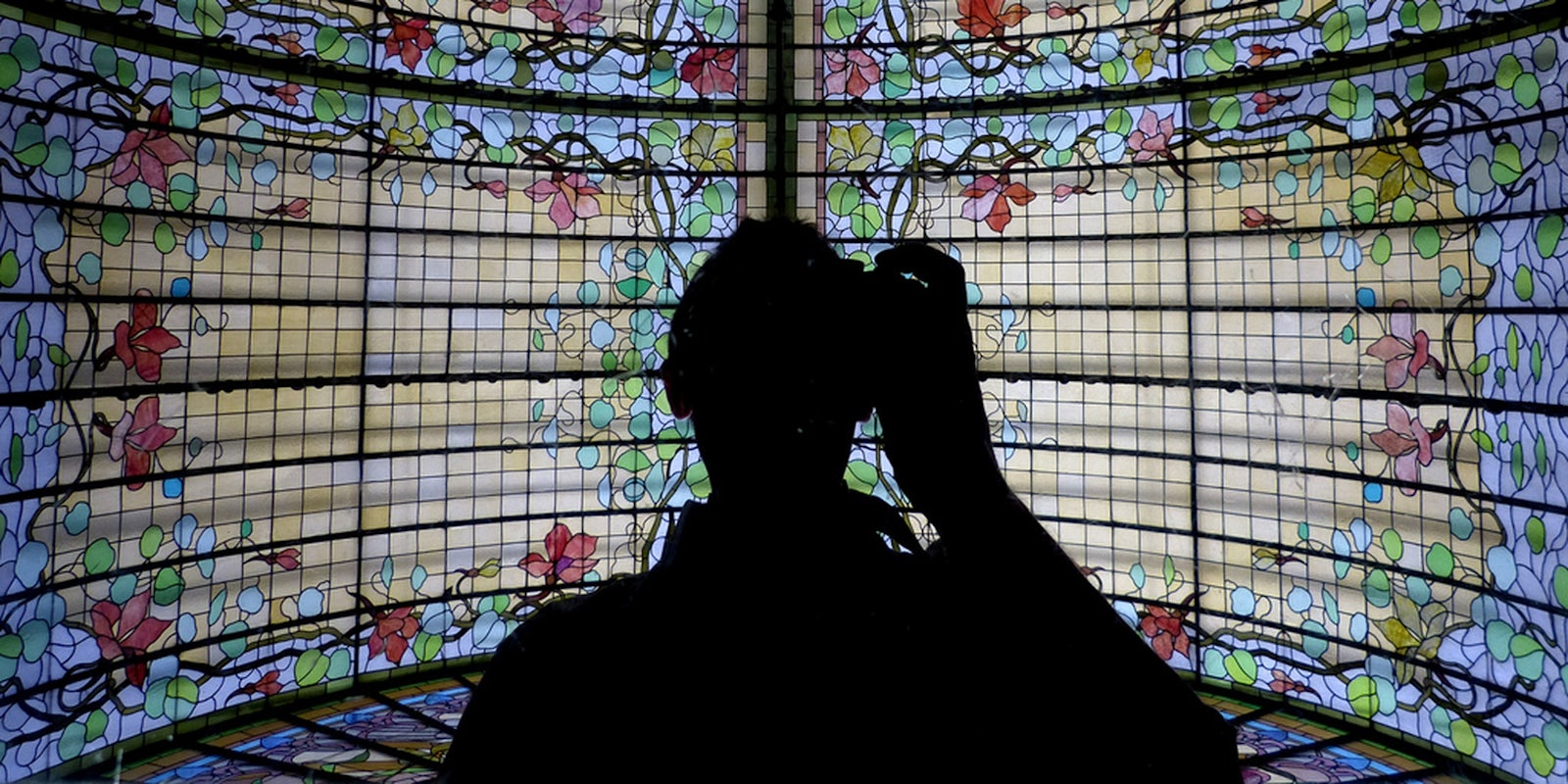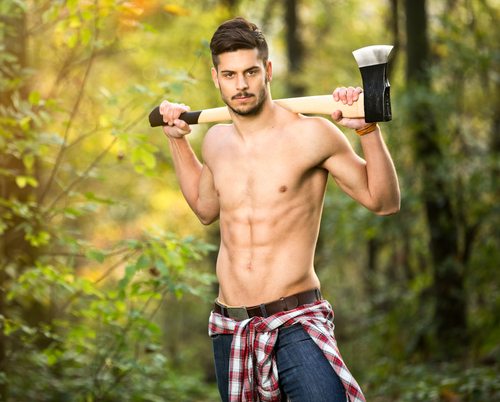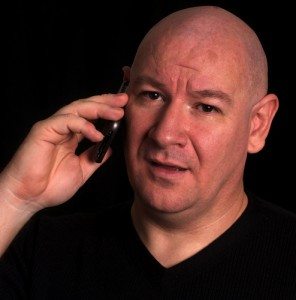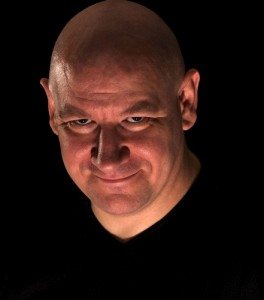Do you hate photos of yourself? Well, you’re not alone. Lots of guys hate how they look in photos. God knows I do. I can count the number of photos of myself that I like on the fingers of one hand—and most of those were taken professionally.
Most of us would love to look good in photos, just out of sheer vanity. But as we live more and more of our lives online, those photos of us often are part of how people get to know us. A good-looking online dating profile photo is critical—it’s one of the snap judgments that people make when they’re browsing through all of their potential matches. More and more employers are looking at prospective employee’s social media profiles to gauge whether they’re interested in hiring them or not…and that includes the photos of you on your LinkedIn profile. It’s all about understanding how to present yourself. Knowing how to look good in a photo will directly affect how people see you.
To give an example that’s been trending on Facebook and Twitter lately: Jeremy Meeks. He’s a convicted felon with a long list of violent crimes in his rap sheet including weapons charges, grand larceny, assault and battery, and a host of other crimes. But goddamn he takes a good photo.
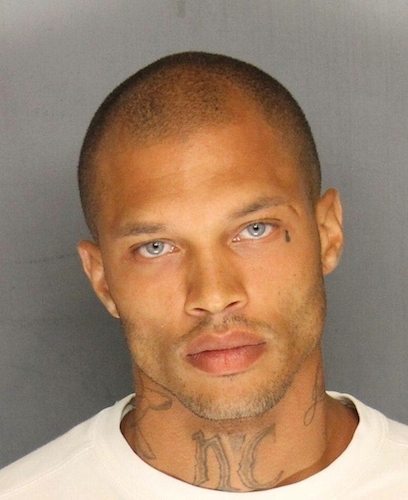
Photo via Stockton Police Department/Facebook
Phwoar.
Why are so many women apparently willing to overlook his incredibly violent past and history of incarceration? Because of that psychological phenomenon known as the Halo Effect—looking good means that people will more readily apply positive beliefs and attributes to you, despite the reality of the situation. But looking good in photos isn’t just about having perfect genes and cheekbones that could cut glass. Despite what we may believe, the camera doesn’t record reality perfectly.
Not only are you trying to render a 3D figure in 2D space—which is going to skew proportions—but you’re doing so through a series of refractive lenses and mirrors which introduce distortions. The list of things that affect how you appear in photos—ranging from the type of camera and lens to the lighting to the angle that you’re facing—is immense. And even little things like wearing sunglasses can affect how people respond to you. Knowing how to look good in photos is a skill, not just the benefit of winning the genetic lottery. And when you understand a few tricks (and some common mistakes), you too can have the sort of dating profile photo that has people flocking to your inbox.
1. Define that jawline
Everyone’s familiar with the adage “the camera adds 10 pounds.” While some of this is due to factors such as lens-choice and focal length, one of the biggest reasons is that people don’t define their jawline. An undefined jawline makes you look soft and fleshy and can create the illusion of a double chin, even when you don’t have one.
Now, not all of us are blessed with a chiseled jawline, but there are ways to define and shape the jawline that don’t resort to trying to alter the shape of your face via Photoshop.
First, if you have a softer jaw or a not particularly prominent chin, then cultivating a carefully trimmed beard or even some artful stubble will help provide visual contrast between your jawline and your neck. However, if you do this be sure that you keep your neck clean-shaven; stubble on the underside of your jaw and neck can create an undesirable illusion that makes your face seem fuller.
Another trick that works well to reduce the look of a double-chin is to put your tongue to the roof of your mouth; it helps pull the flesh up and tightens up the jawline. But perhaps the best trick of all is to tilt your head down slightly and gently jut your chin out. Imagine a thread is attached to the tip of your chin and it’s pulling your head forward. Let it pull you forward ever so slightly. It’s a small thing that makes you much more photogenic. Headshot photographer Peter Hurley has a video showing just how to accomplish this trick and the dramatic difference it can make in your photos.
2. Don’t obscure your eyes
You’ve heard the cliche that “the eyes are the window to the soul” before, and it’s 100 percent true. Eye contact is a critical form of non-verbal communication in humans; it’s an instinctive part of how we signal interest, improve cooperation or even alert others to danger. Under the right circumstances, strong eye contact can even cause us to fall in love. When we can’t see someone’s eyes—or they won’t make eye contact with us—we feel uncomfortable around them. It makes us feel as though we can’t trust them.
This is why you don’t want to put barriers up to eye-contact in your photos. In fact, this is hands-down one of the most consistent mistakes I see in online dating photos. If you want to look good in photos, you have to make sure that people can see your eyes clearly. The biggest mistake people make is wearing sunglasses. Now, I get the intent. You want to look cool, even a little mysterious and nothing says “cool, brooding bad-ass celebrity” like a sweet pair of shades, right?
In practice? Not so much. People are much less likely to respond positively to photos of people in sunglasses. It’s putting a barrier between you and the person you’re hoping to connect with, making you appear less likable and less approachable. You also want to avoid other effects that inadvertently obscure your eyes. Deep shadows, for example, have a similar effect to sunglasses. This is one more reason you want to leave your fedora off in your dating profile photos; the brim casts unflattering shadows over your eyes. Similarly, props that cover your eyes—from the “taking my self-portrait” pose to letting your hair fall over your face—detract from the message you’re trying to send.
3. It’s all about the squinch
Part of what makes someone look good in photos? Confidence. And as I’ve said many times before, confidence isn’t just in how you feel, it’s in how you carry yourself. Your body language tells outside observers whether you’re feeling confident or scared; it’s in the the way you stand, the way you carry yourself, the expression on your face, even the way you squint.
Wait, what? Remember how I was saying that the eyes are key to communication? They are also part of how we signal our emotional states to others. Think of how many times you’ve seen someone do the “Deer In The Headlights” look in a photograph; at best, it looks silly. At worst, you look like you’re terrified out of your mind. When your eyes are wide—showing the whites of your eyes, as it were—you’re signaling surprise, fear and uncertainty, not exactly emotions you want to project when you’re trying to look good. Slightly narrowing your eyes, on the other hand, reverses the effect. You’re displaying greater levels of confidence.
Seem crazy? OK, stick with me for a second, because there’s actually a point behind this. One of the most common ways of showing confidence, openness and friendliness is through a smile. A genuine smile—also known as a “Duchenne” smile—is a smile that crinkles up your face. One of the keys to telling a genuine smile from a fake smile is to watch the eyes; a genuine smile makes the corners of your eyes crinkle up and causes you to squint slightly, whereas a fake smile makes you look like an extraterrestrial in a flesh suit trying to infiltrate human society.
Doing the “squinch”—lifting and tightening your lower eyelids while letting your top eyelids droop slightly—replicates the way that your eyes crinkle during a Duchenne smile. Here’s photographer Peter Hurley again, demonstrating how to do the “squinch”—and how it can make you look good in photos.
Just remember: its a “squinch,” not a “squint.” You’re trying to look more confident, not doing your best Clint Eastwood impression or looking like you’re staring into the sun.
4. Show your torso (but not too much)
One of the keys to taking amazing photographs is framing and cropping—understanding how much to show and how much to leave out. When we’re applying this to portraiture—such as if you’re hoping to look good for your dating profile photo—this means understanding just how much of you to display.
Wait, that came out wrong. When you’re picking photos for an online dating profile, you want to present an accurate (albeit flattering) portrayal of how you look, which is why body shots are important. However, showing your whole body actually makes the photo less attractive.
So how much should you show? Over at PhotoFeeler, after studying 60,000 ratings of 800 photographs, they found that people respond most favorably to torso shots and busts—and less so to full-body photos and head-only pics. Let’s compare these two photos of the same model. Same pose, same lighting, but one’s predominantly torso while the other is full-body.
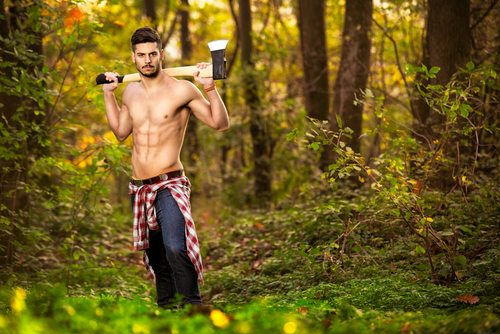
Images via Shutterstock
The second photo—featuring the model’s full body—has less impact than the first. Because it’s so zoomed out, it creates a feeling of distance from the subject. The closer photo still shows enough of the body to give an accurate idea of how he looks but is close enough to foster a greater sense of intimacy. You’re able to see more of his face and those all-important eyes. They’re too small and hard to make out in the full-body shot.
A shot of just the head, on the other hand, doesn’t convey the same level of information. In fact, it can make people on dating sites feel as though you’re trying to hide unflattering features. A bust shot conveys more information as well and has been a staple of portraiture and art since antiquity. And if it’s good enough for Roman emperors, it’s good enough for you.
5. Control the light
If you want to look good in photos, you need to control the light. Any photographer will tell you: manipulating the light source will completely change how you look. Let’s look at two photos involving the same model using two very different light setups:
|
“Hey sweetie, need me to pick anything up at the store while I’m out?” |
“I will eat your children.” |
Images via Shutterstock
Just changing the angle of the lighting not only creates a vastly different mood, but completely changes the topography of the face. A slight change in the light means that wrinkles are deeper, creases are emphasized, the texture is rougher and he suddenly has bags under his eyes when he didn’t have any before. The angle of the light, the type of light, how even the coverage is, whether it’s diffused or not…all of these can make dramatic differences in how you look in photos. The ideal lighting for looking good in photos is indirect sunlight, preferably either shortly after sunrise or shortly before sunset—these are known as the golden hours.
Of course, not all of us can arrange to have photos taken only at times when the light is perfect, so it’s important to know how to minimize light that makes you look bad. And in most circumstances, that means direct light. Direct light usually has harsh shadows and overly-bright highlights that play up wrinkles and creases and can make you tuck your head and squint, creating a double chin and making you look odd. This is why photos with on-camera flash tend to look awful—it’s a bright, direct light that washes you out and gives you a massive case of red-eye. Overhead direct light is hands down the worst lighting for flattering photos—it ensures long, dramatic shadows that make you look “off.”
This goes double for fluorescent lighting—fluorescent lighting makes your skin look sickly and brings out every single imperfection and unevenness you have. Ever wonder why your reflection looks so god awful when you’re trying on clothes at the mall? Overhead fluorescent lighting is never your friend.
6. Know your angles
Ever hear someone talk about “shooting them from their good side?” Did you roll your eyes a little, thinking that this was them being a little over-dramatic, a little too model wanna-be?
Guess what? They’re not actually wrong.
Your “good side” is actually a thing. Most people don’t have perfectly symmetrical faces (Shania Twain and Denzel Washington being the apparent exceptions). All of us have features that aren’t perfectly aligned, centered or even. Your nose might be slightly larger on one side, your mouth might be slightly lopsided or one eye might be higher than the other. Even Hollywood celebrities will have features that are just slightly off.
Yes, you could always use the Liquify tool in Photoshop to correct for any issues, but people who seem relentlessly photogenic know which angles show them in the best light and will make a point in posing such a way that any asymmetries are minimized or disguised. It can take some time to find your “good” side—you may need to go through many photos with a friend in order to figure out which angle best suits you. But when you do, suddenly you’ll be the person everyone is talking about when they ask, “How does he always look so good in photos?”
Harris O’Malley is a writer and dating coach who provides geek dating advice at his blog, Paging Dr. NerdLove, and Kotaku. His new book, Simplified Dating, is available exclusively through Amazon. He is also a regular guest at One of Us. He can be found dispensing snark and advice on Facebook and on Twitter at @DrNerdLove. This article was originally featured on the author’s website and reposted with permission.
Photo via E3000/Flickr (CC BY S.A.-2.0)

